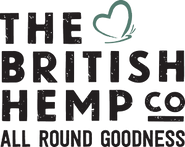Despite looking alike and sharing a species, hemp and cannabis (also called marijuana) are not the same. In fact, the distinction between the two is critical—especially for consumers, farmers, lawmakers, and health-conscious individuals. While both plants come from the Cannabis sativa species, they have very different uses, chemical compositions, and legal statuses.
Here’s a clear breakdown of why hemp is not cannabis—at least, not in the way most people think.
1. The Key Difference: THC Content
The defining factor that separates hemp from marijuana is THC, or tetrahydrocannabinol—the psychoactive compound responsible for the "high" in recreational cannabis.
- Hemp contains less than 0.3% THC (by dry weight), which is not enough to produce any psychoactive effects.
- Marijuana, on the other hand, can contain 5% to over 30% THC, making it potent enough to alter mood, perception, and consciousness.
So while hemp and marijuana are both varieties of the cannabis plant, their THC levels make them legally and functionally distinct.
2. Different Uses and Applications
Hemp is primarily an industrial crop with thousands of uses:
- Food: hemp seeds, hemp oil, hemp protein powder
- Textiles: clothing, rope, bags
- Building materials: hempcrete, insulation
- Bioplastics and paper
- Health and wellness products: omega-rich oils, dietary fibre, skin care
Marijuana, however, is cultivated almost exclusively for medical or recreational use, due to its higher THC content.
3. Legal Status: A Major Divide
Thanks to the 2018 Farm Bill in the United States (and similar legislation in countries like the UK and EU), hemp is legal to grow, sell, and consume, provided it meets the low-THC threshold.
Marijuana, in contrast, remains highly regulated or illegal in many parts of the world. Its cultivation requires strict licenses, security measures, and tracking systems due to its psychoactive properties.
This legal split has real-world implications for farmers, businesses, and consumers—misunderstanding it can lead to unnecessary stigma or even legal trouble.
4. You Can’t Get High from Hemp
Despite the visual similarities between hemp and marijuana plants—tall green stalks, serrated leaves—hemp will not get you high. Smoking it, eating it, or applying hemp oil to your skin will never produce the intoxicating effects associated with cannabis.
This fact alone makes hemp a safe, legal, and beneficial crop with broad appeal—from parents looking for healthy snacks for their kids to athletes using it for recovery.
5. A Shared History, Diverging Futures
Historically, hemp has been used for over 10,000 years—from ancient sails and ropes to modern superfoods. Its resurgence today reflects growing interest in sustainability, plant-based diets, and eco-friendly manufacturing.
Marijuana, while also ancient in its use, is just beginning to re-enter the mainstream as medical research and policy reform open doors.
In Summary
While both hemp and marijuana belong to the Cannabis sativa family, they are not the same plant in practical, legal, or functional terms.
- Hemp = industrial, nutritional, non-psychoactive
- Marijuana = recreational/medical, psychoactive, regulated
Understanding this difference not only clears up confusion—it helps support the development of hemp as a sustainable solution in farming, nutrition, and green industry.
Hemp is cannabis—but it’s not marijuana. And that distinction matters more now than ever.
